I. Introduction
In 1955, a new era in composite resin restorative dentistry began when Buonocore devised a manner to attain a predictable acid induced micromechanical bond of resin to enamel
1). The successful bond to enamel induced further investigation into bonding systems. Since fourth generation bonding systems have been introduced, the clinical reliability of adhesive technique was greatly improved. The bonding agent used in fourth generation bonding systems forms an intermediate layer between dentin surface treated with dentin primer and the resin restoration, and chemically reacts with the dentin primer to provide micromechanical retention to tooth structure
2). It is reported that in vitro bond strengths of resin composite to enamel exceed 20Mpa using these multi-step adhesive systems. This is sufficient to resist the shrinkage stress that accompanies the polymerization of resin composites
3). However, the development of predictable bonding to dentin is still problematic because of its compositional and structural differences to enamel
4). Only recently developed dentin adhesive systems produced laboratory results that approach those for enamel bonding
5,
6,
7).
In further investigations to dentin bonding system, one of the recent developments is the introduction of filled adhesives
8). These bonding agents are loaded with varying proportions of fillers, which may be silica or glass of varying size. When using these newly developed dentin bonding systems, increased bond strengths were reported.
Fanning et al.
9) compared the mean shear bond strengths of filled and unfilled adhesive modalities of the All Bond 2 and Amalgambond plus and Optibond systems and concluded that the addition of filler particles in the adhesive agent resulted in an increase in the dentin bond strength.
Masashi et al.
10) reported that the maximum bond strength was obtained when 10% filler was added to the bonding agent.
One possible explanation for this phenomenon is the concept of an "elastic cavity wall"
11,
12). The intermediate layer, together with the resin impregnated dentin interface act as an elastic buffer, which offers the resin-dentin interface a sufficient strain capacity to dissipate the composite polymerization
13).
Enhancement of the physical properties of the bonding agent is another possible explanation for this phenomenon. Fanning et al.
9) suggested that the incorporation of filler particles into a system's adhesive could increase the potential shear bond strength by improving the mechanical properties. Improvements noted in such adhesive liner include greater strength, lower polymerization shrinkage, and lower linear coefficient of thermal expansion. But, a few studies have been done regarding the correlation between the dentin bond strength and filler level of bonding agent.
In this study, shear bond strengths of experimental filled adhesives with varying filler levels were tested to determine the optimal filler level. The diametral tensile strengths and thickness of each experimental adhesive were also tested to evaluate if there is a relation between shear bond strength and mechanical properties of adhesive.
II. Materials and methods
A. Shear bond strength measurement
Seventy mandibular and maxillary human molars, not more than six months after extraction, were used for this study
13). The teeth used for bond strength measurement were caries-free and unrestored. Teeth were placed immediately after extraction in a 0.5% chloramine solution for a week and thereafter stored in distilled water in a refrigerator at a nominal 4℃.
After the tooth was mounted in a holder by means of epoxy resin (Struers, Copenhagen, Denmark), the occlusal tooth surface was grinded until dentin surface was exposed. Automatic polishing machine (Pedemax-2, Struers, Copenhagen, Denmark) against silicon carbide abrasive paper with Grade 1000 was used for polishing the surface under running water.
Then the specimens were randomly assigned to seven groups. A Self-adhesive PVC tape with a 4mm diameter hole was placed over the dentin surface for confining the area of application. According to the manufacturer's instructions, etchant (3M, Dental products Inc., St. Paul. U.S.A.) was applied to dentin for 15 seconds and rinsed with water for 10 seconds. After removing excess water with an air syringe, Scotchbond multipurpose primer was applied. The dentin surface was gently dried for 5 seconds. Thereafter, each experimental adhesive (Vericom, Anyang, Korea) was applied to dentin and light cured for 10 seconds. The composition of experimental adhesive agents is shown in
table 1. The average size of 1µm barium glass was used for the production of experimental adhesives. The particle size distribution of used filler is shown in
Figure 1. 0, 5, 10, 15, 20, 30 and 45wt% filler was added to bonding agent. Then Z-100 (3M, Dental products Inc., St. Paul. U.S.A.)was applied in a bulk having 2mm thickness and light cured for 20 seconds. All the specimens were stored for 24 hours in distilled water at 37℃. Specimen preparation procedures are illustrated in
Figure 2.
All the prepared specimens were mounted in a universal testing machine (model 4466. Instron corp.). A chisel-shaped rod attached to the compression load cell and traveling at a cross speed of 0.5mm/min was applied to each specimen until failure occurred
15). The maximum load was divided by the cross sectional area of bonded composite to determine the shear bond strength in Mpa.
All the specimens were examined under optical microscope of 40x to define whether the failure was cohesive (within dentin) or adhesive (between the composite and dentin). The schematic representation of shear bond strength measurement is shown in
Figure 3.
The results were analyzed by Kruskal-Wallis test, and then subjected to the Mann-Whitney test to make comparison among groups. All the statistical tests were processed with SPSS soft ware package.
B. Diametral tensile strength measurement
Each test group was composed of ten specimens. Cylinder-shaped specimens with 4mm diameter and 6mm height were formed by addition of experimental adhesives to mold in approximately 2mm thick increments. Each increment was cured for 20 seconds prior to addition of the next. After the specimens were pulled out, the formed specimens were additionally cured in two opposite perpendicular directions for 20 seconds.
Then all the specimens were immersed in distilled water at 37℃ for seven days. For diametral tensile strength measurement, they were loaded in compression to failure in a universal testing machine (Model 4466. Instron corp.)with a crosshead speed of 1mm/min. The results were analyzed by Kruskal-Wallis test, and then subjected to the Mann-Whitney test to make comparison among groups. The schematic representation of diametral tensile strength measurement is shown in
Figure 4.
Five Specimens in each group were prepared in a manner similar to that described in shear bond strength tests. Then the specimens were molded in epoxy resin (Struers, Copenhagen, Denmark) and cross-sectioned perpendicular to the dentin surface with an Isomet low speed saw (Buehler Ltd., Lake Bluff IL). After the specimens were polished under with automatic polishing machine (Pedemax-2, Struers, Copenhagen, Denmark), the specimens were mounted on aluminum stabs, sputter-coated with gold and observed under scanning electron microscope (JSM-840A JEOL Ltd, Japan). 1000x,or 1500x observations were recorded and examined in photoshop 5.0 (Adobe system inc., moutina view, Ca, U.S.A). The thickness of adhesive layer was measured ten times at random position in each specimen using Sigma scan image version 2.0(Jandel Scientific software, San Rafel, Ca, U.S.A). The results were analyzed by turkey'test followed by T-test.
III. Results
The mean shear bond strengths and standard deviations for each group are shown in
table 2.
Results showed that filler level had a statistically significant influence on bond strength (p<0.05). In Mann-Whitney test, significant differences between 5, 10, 15, 20% filled groups are found. The maximum shear bond strength (19.9±1.38 Mpa) was obtained when 15% filler was added to the bonding agent. When fillers are added more than 20wt%, bond strengths were gradually decreased with increasing filler level.
The failure patterns of shear bond strength specimens are mostly cohesive. Fifty-one of seventy samples showed cohesive failures. Only nine-teen of seventy samples showed adhesive failures. Ten of those adhesive failures are occurred in 30, 45% filled groups. The failure patterns are shown in
figure 14,
15.
The diametral tensile strengths for each experimental adhesive are shown in
table 3. The diametral tensile strengths for the experimental adhesives slightly increased with increasing filler levels in 0, 5, 10, 15, 20% filled groups but, showed no significant differences (p>0.05). But, the diametral tensile strengths were significantly decreased in experimental adhesives with over 30% filler levels (p<0.05).
A relation between shear bond strength and diametral tensile strength was considered but no statistical significance was found by Pearson's correlation coefficient. The shear bond strength and diametral tensile strength are shown in
figure 5.
In the SEM examination, the adhesive thickness of each group tended to significantly increase from 5.97µm at 0% filler level to 73.37µm at 45% filler level.
Table 4 shows the adhesive thickness.
IV. Discussion
In this study, the maximum shear bond strength (19.9±1.38Mpa) was obtained when 15% filler was added to the bonding agent. When filler levels were lower than 10% or higher than 20%, the shear bond strengths significantly decreased.
The result of shear bond strength in this study had a similarity to that of Masashi et al.
10 In their study to investigate the shear bond strengths and temperature changes during polymerization using 0, 10, 20, 30, 40, 50, 60 and 70 % filled adhesives of average size 0.05µm, bond strengths to dentin and the temperature change were greatly affected by the filler level. They reported that maximum shear bond strength (14.3±2.3Mpa) was obtained with 10% filler level and shear bond strengths decreased with filler level higher than 30% (10.4±1.7Mpa -13.2±2.43Mpa). They explained that the reason for the lower dentin bond strengths with higher filler level of experimental bonding agents were related to decreased penetration of adhesive monomers and to the existence of the internal voids due to the increased viscosity of experimental bonding agents.
But, in the SEM examination in our study, the experimental adhesives with highly filled groups closely adapted to primed dentin and internal void was also not found. Adversely, gaps between primed dentin and adhesive were found in 0% filled and 5% filled groups. These findings were consistent with low shear bonding strengths and diametral tensile strengths with low filler levels. The low bond strengths examined in lower filled groups might be related to oxygen inhibition. The thickness of adhesive layer in lightly filled adhesives founded to be approximately 6µm. Considering that the thickness of oxygen-inhibited layer is about 15µm
16,
17), 6µm is not a sufficient thickness to be polymerized. These inadequately cured adhesives might prevent the establishment of the bond.
The major role of the adhesive resin is the stabilization of the hybrid layer and the formation of the resin extension into the dentinal tubules. It is recommended in this aspect that the adhesive resin be polymerized prior to the application of the restorative resins. In order to optimize the dentin bond strength, it is important to achieve a complete cure of bonding agent as quickly as possible after application.
The reason for decreased shear bond strengths of highly filled groups could be considered in another aspect. Diametral tensile strengths for the experimental adhesives showed no significant differences in 0, 5, 10, 15, 20% filled groups and significantly decreased in experimental adhesives with 30, 45% filled groups. In these highly filled groups, shear bond strengths are also significantly decreased. The decreased mechanical properties of highly filled groups might explain the lower shear bond strength. The thick but weak adhesive layer formed in highly filled groups might act as a site of failure. This result suggested that correlation between diametral tensile strength and shear bond strength might be exist. The increased adhesive failures in highly filled groups support this premise.
The addition of fillers reportedly improved severals of the liner's mechanical properties, which account for increase in bond strength
18,
19,
20). Consequently increased diametral tensile strength with increasing filler level of experimental adhesives levels was also expected. But, in our experiment, diametral tensile strengths significantly decreased in experimental adhesives with higher than 30% filler levels. The unexpected result of diametral tensile strength leaved some thing to be considered. The concentration of relatively larger size of filler made the interfiller distance short and might cause the adhesive layer more susceptible to crack propagation in these highly filled groups.
The mechanical properties of adhesives were closely related to their microstructures
21). Factors such as the integrity of the interface between the glass particles and the polymer matrix, the particle size, and the number and size of voids have important roles in determining the mechanical properties. The interface between the filler and surrounding matrix has been thought to be a weak link.
The study of Lin CT et al.
22) support this premise. In their study of investigating the effect of silanization and filler fraction on the mechanical properties of aged dental composites, the result showed that diametral tensile strengths increased proportionally as the filler fraction of the composites increased in silanized groups. However, in the unsilanized groups, diametral tensile strength decreased as the filler fraction increased. Microscopic examination of the fractured samples showed that failure primarily occurred adjacent to the filler particles for unsilanized composites.
Dentin bonding strength and its related factor are quite complex and not fully understood. Mechanical properties of adhesive may be a key to understand the complex relation. But, mechanical property of adhesive is the result of an interaction of the various components. The diametral tensile strength and thickness of adhesive examined in this study are only a part of mechanical property of material. Other mechanical properties such as compressive strength, flexural strength and elastic modulus, degree of conversion, polymerization shrinkage are also important factors in evaluating the ultimate mechanical properties of dental materials. Further work is need to determine the effect of filler in dentin bonding agent and the various factors which may play a role in dentin bond strength.
V. Conclusion
According to this study we could summarize as follows:
The filler level showed statistically significant differences in shear bond strength (p<0.05).
Shear bond strengths increased with filler addition in bonding agent in some extent but, decreased when highly filled adhesive were used. And 15% filler level was considered as an optimal filer level for adhesives.
The diametral tensile strengths for the experimental adhesives significantly decreased in experimental adhesives in 30, 45 % filled groups (p<0.05).
The adhesive thickness of each group significantly increased with increasing filler level.
A relation between shear bond strength and diametral tensile strength was denied.
REFERENCES
- 1. Buonocore MG. A simple method of increasing the adhesion of acrylic filling materials to enamel. J Dent Res. 1955;434: 849-853.
- 2. Erickson RL. Mechanisms and clinical implications of bond formation for two dentin bonding systems. Am J Dent. 1989;10: 117-123.
- 3. Davidson CL, de Gee AJ, Feilzer A. The competition of polymerization contraction stress by flow in dental composite. J Dent Res. 1984;63: 1396.ArticlePubMedPDF
- 4. Summit JB, Robbins JW, Hilton TJ, Schwartz RS, Dos Santos E Jr. Fundamentals of Operative Dentistry. 1996;157.
- 5. Triolo PT Jr, Swift EJ Jr, Barkmeier WW. Shear bond strengths of composite to dentin using six dental adhesive systems. Oper Dent. 1995 03-04;20(2):46-50.PubMed
- 6. Leinfelder KF. Current status of dentin adhesive systems. Alpha Omegan. 1998;91(4):17-22.PubMed
- 7. Swift EJ Jr. Bonding systems for restorative materials-a comprehensive review. Pediatr Dent. 1998 03-04;20(2):80-84.PubMed
- 8. Labella R, Lambrechts P, Van Meerbeek B, Vanherle G. Polymerization shrinkage and elasticity of flowable composites and filled adhesives. Dent Mater. 1999 03;15(2):128-137.ArticlePubMed
- 9. Fanning DE, Wakefield CW, Robbins JW, Bagley AL. Effect of a filled adhesive on bond strength in three dentinal bonding systems. Gen Dent. 1995;43(3):256-262.PubMed
- 10. Miyazaki M, Ando S, Hinoura K, Onose H, Moore BK. Influence of filler addition to bonding agents on shear bond strength to bovine dentin. Dent Mater. 1995 07;11(4):234-238.ArticlePubMed
- 11. Kemp-Scholte CM, Davidson CL. Complete marginal seal of Class V resin composite restorations effected by increased flexibility. J Dent Res. 1990 6;69(6):1240-1243.ArticlePubMedPDF
- 12. Kemp-Scholte CM, Davidson CL. Complete marginal seal of Class V resin composite restorations effected by increased flexibility. J Dent Res. 1990 06;69(6):1240-1243.ArticlePubMedPDF
- 13. Van Meerbeek B, Willems G, Celis JP, Roos JR, Braem M, Lambrechts P, Vanherle G. Assessment by nanoindentation of the hardness and elasticity of the resindentin bonding area. J Dent Res. 1993 10;72(10):1434-1442.ArticlePubMedPDF
- 14. Pashly DH. Dentin bonding: overview of the substrate with respect to adhesive material. J Esthet Dent. 1991 03-04;3(2):46-50.ArticlePubMed
- 15. Hara AT, Pimenta LA, Rodrigues AL Jr. Influence of cross head speed on resin dentin shear bond strength. Dent Mater. 2001 07;17(2):165-169.ArticlePubMed
- 16. Rueggeberg FA, Margeson DH. The effect of on an oxygen inhibition of unfilled/filled composite system. J Dent Res. 1990 10;69(10):1652-1658.ArticlePubMedPDF
- 17. Finger WJ, Lee KS, Podszun W. Monomers with low oxygen inhibition as enamel/dentin adhesives. Dent Mater. 1996 07;12(4):256-261.ArticlePubMed
- 18. Fanning DE, Wakefield CW, Robbins JW, Bagley AL. Robbins Effects of a filled adhesives on bond strength in three dentinal bonding systems. Gen Dent. 1995 05-06;43(3):256-262.PubMed
- 19. Bagley A, Wakefield CW, Robbins JW. In vitro comparison of filled and unfilled universal bonding agents of amalgam to dentin. Oper Dent. 1994 05-06;19(3):97-101.PubMed
- 20. St Germain H, Swartz ML, Phillips RW, Moore BK, Roberts TA. Properties of microfilled composite resins as influenced by filler content. J Dent Res. 1985 02;64(2):155-160.ArticlePubMedPDF
- 21. Xie D, Brantley WA, Culbertson BM, Wang G. Mechanical properties and microstructures of glassionomer cements. Dent Mater. 2000 03;16(2):129-138.ArticlePubMed
- 22. Lin CT, Lee SY, Keh ES, Dong DR, Huang HM, Shih YH. Influence of silanization and filler fraction on aged dental composites. J Oral Rehabil. 2000 11;27(11):919-926.ArticlePubMed
Fig. 1

Fig. 2Specimen preparation procedure

Fig. 3Shear bond strength measurement.

Fig. 4Diametral tensile strength measurement.

Fig. 5Shear bond strength and diametral tensile strength

Fig. 6

Fig. 7SEM examination of Group1 (0% filled group)

Fig. 8SEM examination of Group2 (5% filled group)

Fig. 9SEM examination of Group3 (10% filled group)

Fig. 10SEM examination of Group4 (15% filled group)

Fig. 11SEM examination of Group5 (20% filled group)

Fig. 12SEM examination of Group6 (30% filled group)

Fig. 13SEM examination of Group7 (45% filled group)

Fig. 14

Fig. 15

Fig. 16cohesive failure in dentin
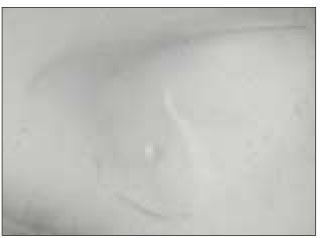
Table 1Composition of experimental adhesives (%)

Table 2Shear bond strength of each group

Table 3Diametral tensile strength of each group

Table 4Adhesive thickness of each group

 , Ho-Hyun Son, Hyuk-Choon Kwon, Chung-Moon Um
, Ho-Hyun Son, Hyuk-Choon Kwon, Chung-Moon Um 





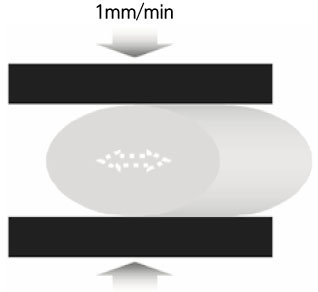

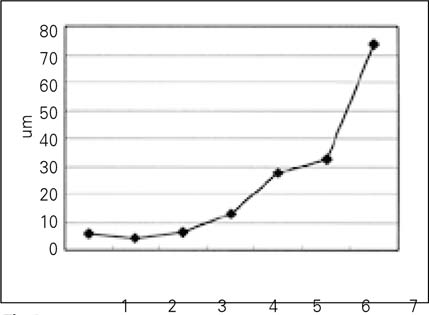

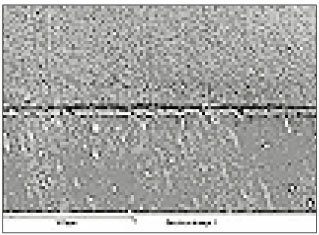
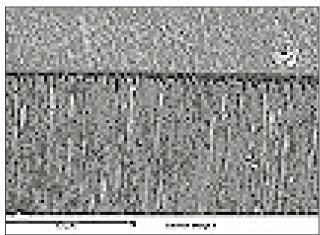


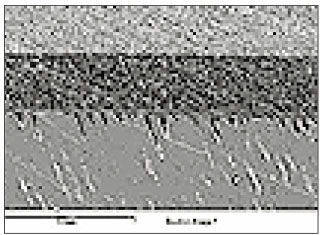

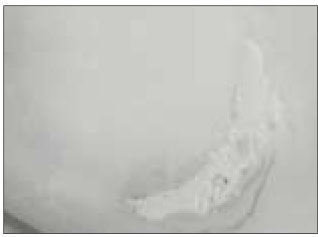



 KACD
KACD




















 ePub Link
ePub Link Cite
Cite

